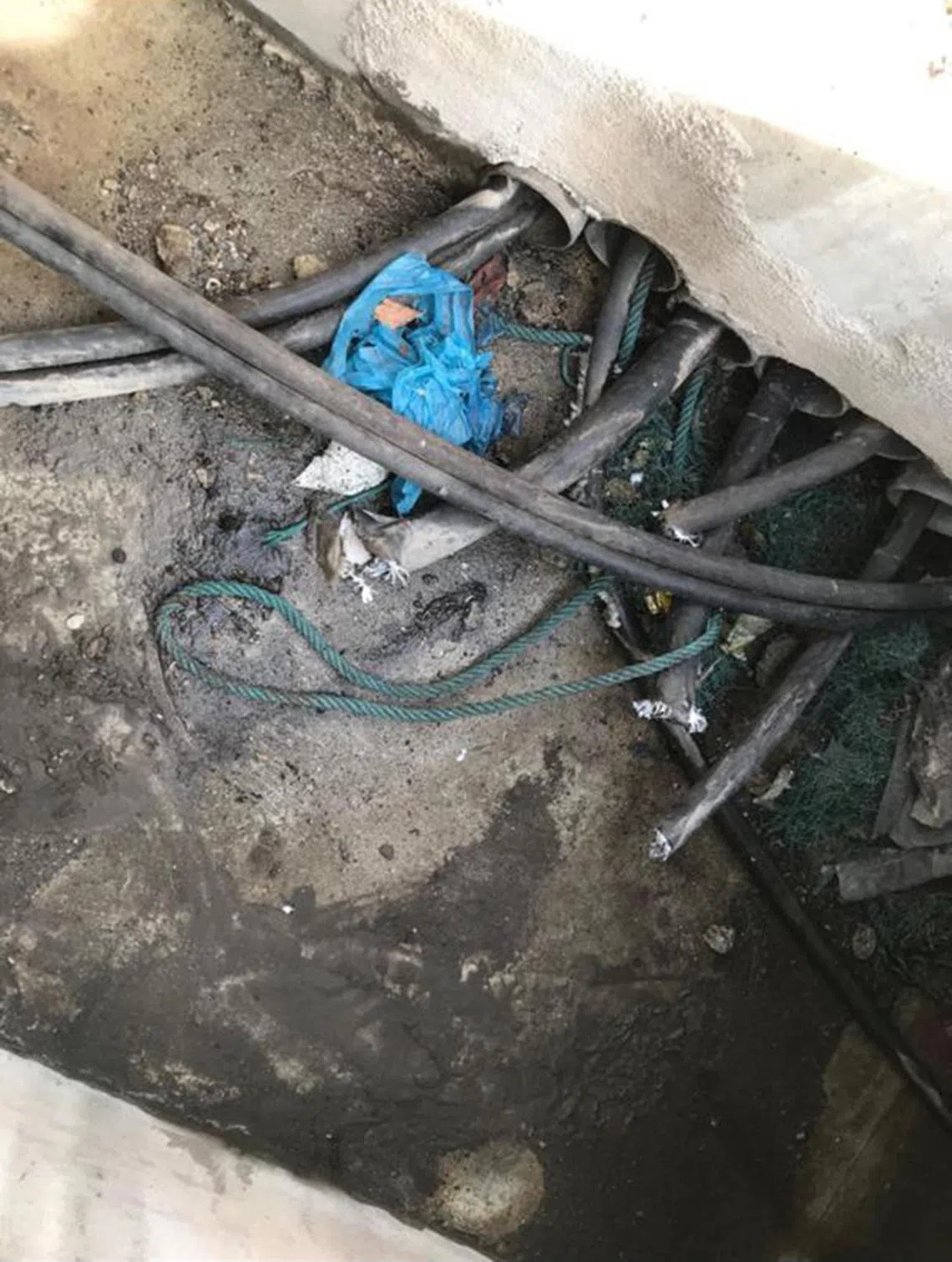‘Pain in the neck’: Cable theft on the track disrupts train speed and schedules in Malaysia
Sign up now: Get ST's newsletters delivered to your inbox

Cable theft has become increasingly common for the rail service in the northern sector (Komuter Utara) and the express Electric Train Service across Malaysia.
ST PHOTO: CHEO YEE JING
Follow topic:
- Cable theft causes significant train disruptions, impacting commuters.
- KTM will implement measures like increased patrols, sensors, CCTV, and more auxiliary police to combat cable theft.
- Most of the thieves are drug addicts seeking resale value from the copper found in cables to fund their addiction.
AI generated
ALOR SETAR, Kedah – Administrative clerk Shakira Banu Abdul Hamid relies on electrified commuter service Komuter Utara to travel daily from her home in Malaysia’s Alor Setar in Kedah to her workplace in Sungai Petani some 60km away.
But despite getting to the station on time for her usual 30-minute morning commute, she ended up two hours late for work earlier in 2025.
An announcement over the station speaker blared repeatedly that “a cable was stolen, causing the train to be delayed by 90 minutes”, the 39-year-old told The Straits Times in August.
Such cases of cable theft, mainly targeting valuable copper wires inside the signalling and power cables on the track, have become increasingly common for the rail service in the northern sector (Komuter Utara) and the express Electric Train Service (ETS) across the country.
Both lines are run by Malaysia’s national rail operator Keretapi Tanah Melayu (KTM). In 2024, there were around 15 cases of cable theft nationwide every month, and 16 cases monthly for January to July 2025, according to KTM. This works out to an average of nearly four cable thefts a week.
These incidents are a “pain in the neck”, said then KTM chief executive officer Mohd Rani Hisham Samsudin, noting that at least a day is needed to inspect, repair and re-install the stolen cables.
“While the average repair time has been reduced (from 30 hours in 2024) to 23.33 hours in 2025, the downtime for KTM service is still difficult for operations and passengers,” Datuk Rani told ST on July 22. He stepped down as CEO on Aug 1.
When the wires are stolen, it creates a domino effect. For one thing, the speed of the trains will be drastically reduced – the system automatically detects changes and reduces train speeds accordingly, for safety reasons – from a maximum 120kmh to just 25kmh for Komuter Utara, and from 140kmh to 25kmh for the ETS.
The slower speeds in turn cause significant delays to train schedules, affecting large numbers of commuters. In 2024, Komuter Utara recorded 5.5 million passengers, while the ETS served 4.1 million.
KTM operates Komuter Utara in the northern sector that covers the states of Perlis, Kedah, Penang and Perak, a popular commuting choice for workers and students as not everyone can afford a car, and inter-state buses run less frequently and get stuck in traffic, while ETS is an express service with nationwide routes that run along the same track.

KTM auxiliary police chief Superintendent Harizan Hassan estimated 200m of stolen cable can fetch between $1,530 and $3,050.
ST PHOTO: CHEO YEE JING
The copper used in power and signalling cables is highly sought after for its resale value. KTM auxiliary police chief Harizan Hassan estimated 200m of stolen cable can fetch between RM5,000 (S$1,520) and RM10,000.
From the start of 2024 to March 2025, KTM suffered RM1.44 million in losses from cable theft in the northern sector of Malaysia alone.
Most of the cable thieves turn out to be drug addicts looking for ways to fund their addiction, said Superintendent Harizan.

A KTM auxiliary police officer inspecting a site where cable was stolen.
PHOTO: KTM
One of the most severe delays took place in June, when three cable theft incidents on the same day disrupted five ETS services and affected Komuter Utara’s schedule. A total of 350m of cable was stolen across three routes. Trains travelling between Sungkai, Perak, and Butterworth, Penang, experienced significant delays of between 30 minutes and 115 minutes that day.
Going forward, Mr Rani said that KTM is actively trying to address the cable theft issue.
For starters, KTM in March began sealing up entrances to underground cables at 60 locations across the country to prevent unauthorised access.
“We are engaging a vendor to conduct a proof of concept for installing sensors and vibration detection devices along the railway route. In collaboration with the Railway Assets Corporation (the asset owner), closed-circuit television cameras will also be installed to monitor movement,” Mr Rani said.
He added that KTM also plans to step up patrols and recruit an additional 100 auxiliary police officers, on top of the current 600, to carry out unscheduled patrols.
Some of these measures are already bearing fruit.

A damaged wire along KTM electrified route, shared by Komuter Utara and Electrified Train Service.
PHOTO: KTM
Cable theft in Kedah has been on the decline following team-ups between KTM auxiliary police and the Royal Malaysia Police that began in March.
At the time, Kedah had recorded the highest number of cable theft cases in Malaysia, with 56 reported incidents in 2024. The number, noted Supt Harizan, has fallen from 11 in January 2025 to just two cases in June.
“Kedah police and KTM auxiliary police shared intelligence and conducted joint patrols. Since then, 15 arrests have been made in Kedah,” he added.
Nationwide, 11 arrests were made for cable theft in 2024, and 24 so far in 2025, according to KTM.


